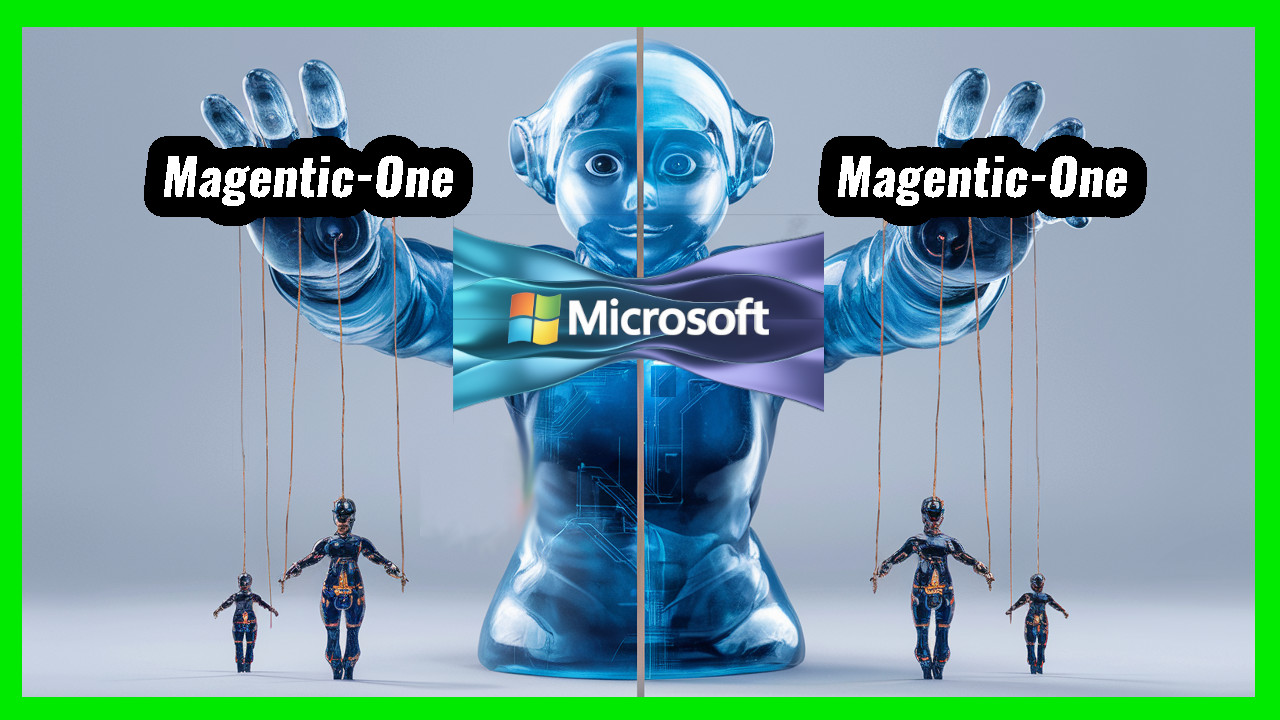See the Podcast at: https://www.youtube.com/watch?v=3zEQJrGch2Y
Introduction
Microsoft’s latest open-source project, Magentic-One, represents a breakthrough in agentic AI. Released in November 2024, this system is part of Microsoft’s AutoGen framework and is designed to tackle complex, open-ended tasks across the web and local file environments. By harnessing multi-agent orchestration, Magentic-One provides a flexible and scalable solution that goes beyond simple task automation, offering possibilities for productivity and innovation across various domains.
A Multi-Agent Architecture
At the heart of Magentic-One is a lead Orchestrator agent that dynamically manages and coordinates multiple specialized agents. The system operates like a well-coordinated team, with each agent handling distinct responsibilities, such as navigating the web, processing files, writing code, or accessing a console shell. This modular approach allows Magentic-One to adapt to different tasks and environments, making it versatile enough to manage a variety of workflows.
The Specialized Agents
Magentic-One’s architecture comprises four specialized agents that collaborate under the guidance of the Orchestrator:
- WebSurfer: Manages tasks within a web browser, handling data retrieval, interaction with web pages, and information gathering.
- FileSurfer: Navigates through local file systems, organizing and accessing files as required.
- Coder: Capable of writing and analyzing Python code, allowing the system to engage in basic programming and task-specific code generation.
- ComputerTerminal: Provides command-line access to a console shell, adding flexibility for operations that need direct terminal input.
Together, these agents create a workflow that simulates a “mini business” or specialized team, autonomously addressing complex, multi-step challenges.
Key Features and Capabilities
Magentic-One introduces several features that set it apart from previous AI systems:
- Autonomous Planning: The Orchestrator agent not only assigns tasks to other agents but also tracks and re-plans as needed to ensure task completion. This ability to adapt dynamically makes it especially useful for unpredictable or multi-step tasks.
- Integration with GPT-4o: While it currently uses GPT-4o for default operations, the system’s model-agnostic design enables the use of various large language models (LLMs) and smaller language models (SLMs).
- Cross-Domain Functionality: The system has demonstrated competitive performance on benchmarks across multiple domains, such as GAIA and WebArena, showing promise in tasks related to software engineering, data analysis, and research.
Real-World Applications and Potential
Magentic-One holds potential for diverse applications, including:
- Software Development: With the Coder and ComputerTerminal agents, Magentic-One can assist with code generation, debugging, and managing development workflows, enhancing productivity for developers.
- Data Analysis and Research: The WebSurfer and FileSurfer agents can gather, process, and organize vast amounts of information, making Magentic-One suitable for scientific research, data curation, and analysis tasks.
- Business Process Automation: By simulating a multi-agent workflow, Magentic-One could automate repetitive, multi-step business processes, freeing up human resources for higher-level tasks.
Challenges and Considerations
As with any cutting-edge AI system, there are considerations and limitations:
- Efficiency: Magentic-One’s current performance is around 30-40% of human efficiency, meaning it may still require oversight for time-sensitive or mission-critical tasks. However, as an open-source project, it is expected to improve over time.
- Risk Management: Since the system can autonomously access web data and interact with local files, careful configuration and safeguards are necessary to prevent unintended actions, especially in sensitive environments.
- Licensing and Compliance: Magentic-One’s use of the MIT license and various Python packages highlights the importance of understanding licensing implications, especially for enterprise applications where liability and compliance can be critical.
Future Directions and Opportunities
Magentic-One marks a shift toward more autonomous, generalist AI systems capable of handling complex workflows. Its open-source nature allows developers and researchers to experiment with and enhance its capabilities, potentially accelerating progress in AI applications across multiple fields.
With Magentic-One, Microsoft has introduced a new paradigm in AI, moving from systems that merely assist with tasks to those that can manage and execute multi-step processes with limited human input. As organizations look to integrate more advanced AI-driven workflows, Magentic-One offers a glimpse into a future where AI acts as a collaborative partner, handling both routine and complex tasks with increasing autonomy.
Conclusion
Magentic-One is a promising step forward in AI technology. Its open-source design, multi-agent architecture, and adaptability make it a flexible tool for tackling complex, real-world problems. While there are still challenges to overcome, the potential applications for productivity, automation, and innovation are vast. As Microsoft continues to develop and refine systems like Magentic-One, we can expect agentic AI to play an increasingly central role in the digital transformation of industries around the world.




